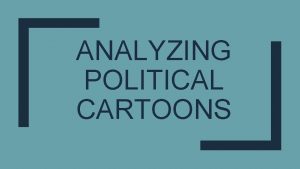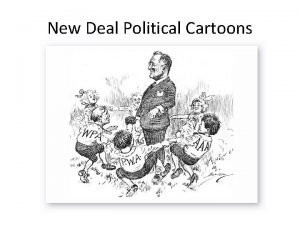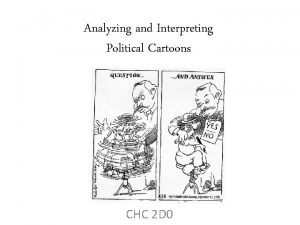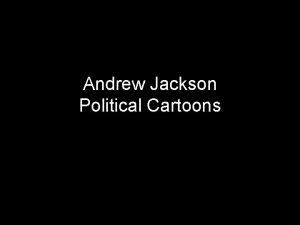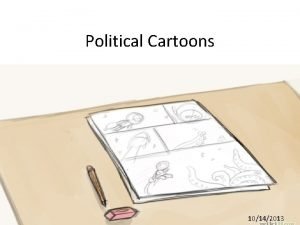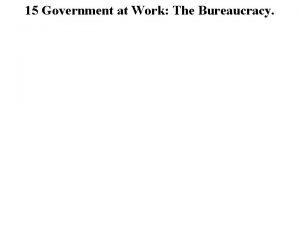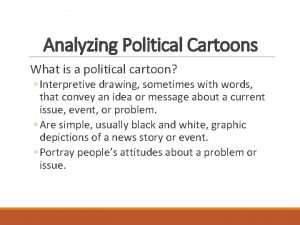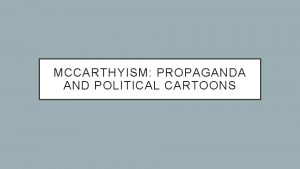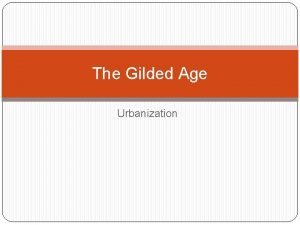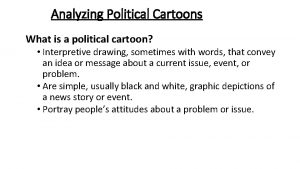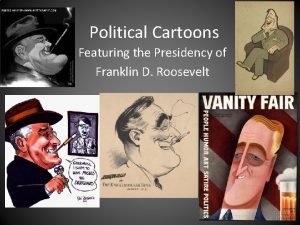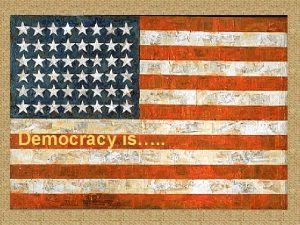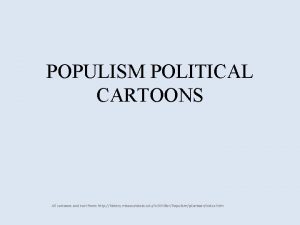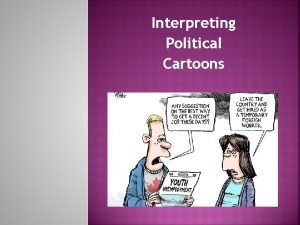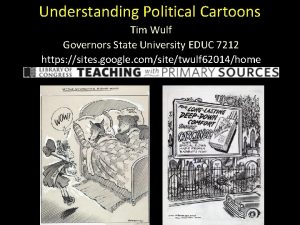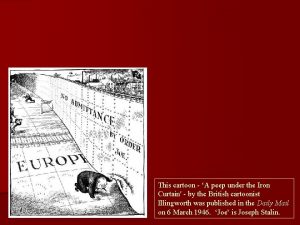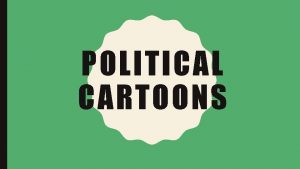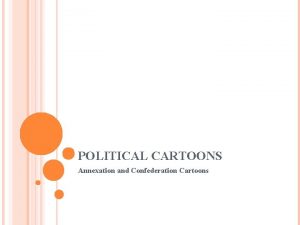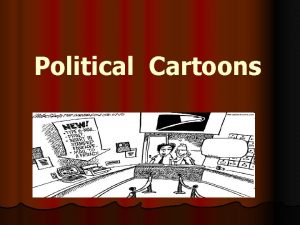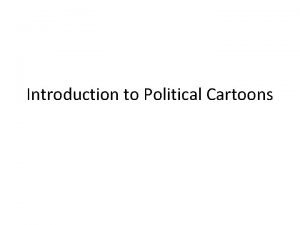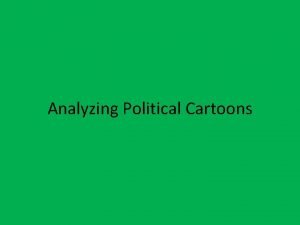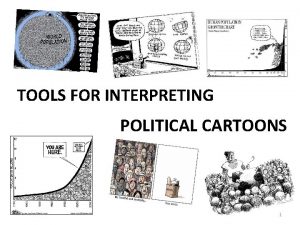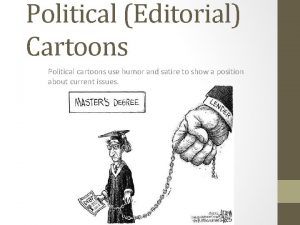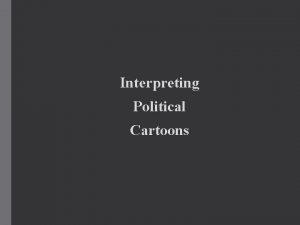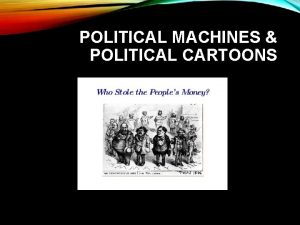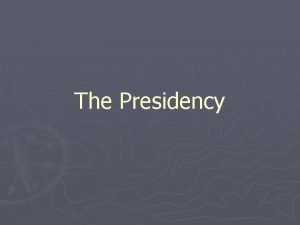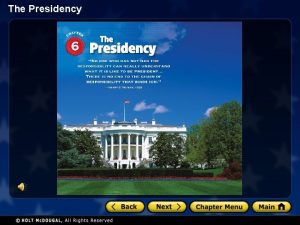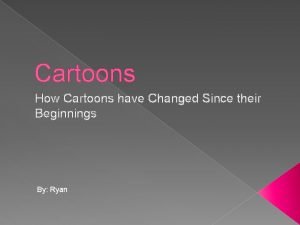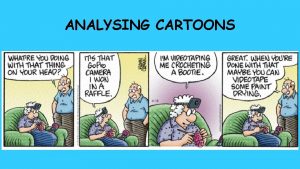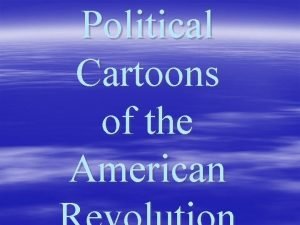Political Cartoons Featuring the Presidency of Franklin D






















- Slides: 22

Political Cartoons Featuring the Presidency of Franklin D. Roosevelt 1

As inauguration approached, the nation waited with anticipation for an administration that would take charge in Washington and address the national crisis. Roosevelt was portrayed as a strong leader (often a ship captain or train engineer), who by his willingness to act, had won the nation's confidence. 2

Roosevelt had been overwhelmingly elected but the nation would have to wait until March 4 th for FDR to take office. An advisor once told FDR that if he solved the nation's problems, he would be remembered as a great president. But if he failed, he would be remembered as the last president. The cartoons from January 1933 to March of 1933 reflect the nation's anxious feelings during that period. 3

Roosevelt is the engineer – leading the country – expectations are that the “bullheaded inaction” of the Hoover administration would be pushed aside or run over by Roosevelt. 4

The Democrats had promised an end of Prohibition, and with passage of the 21 st Amendment, Congress passed the Beer and Wine Revenue Act of March 22, which taxed alcoholic beverages to raise federal revenue. 5

The country had great hopes and expectations for FDR. During the Democratic convention in Chicago in 1932, Roosevelt was chosen as the candidate and said, “I pledge you, I pledge myself, to a new deal for the American people…. . Give me your help, not to win votes alone, but to win in this crusade to restore America to its own people. ” In FDR’s first inaugural address he promised to bring changes with “speedy adoption. ” 6

100 Days • Explosion of legislation in the history of the U. S. Congress Roosevelt was inaugurated on March 4 th. A long lame -duck session was changed in the 20 th Amendment. This moved inauguration to Jan. 20 th 7

Early in the Hundred Days, public response to Roosevelt's programs was positive, especially with regard to his handling of the bank emergency, reduction in government spending and ending prohibition. FDR called a special session of Congress. On March 9 th FDR sent an Emergency Banking Act to Congress – passed and signed by the President the same day. This gave the President powers to regulate financial transactions. He immediately called for a bank holiday. It also required that anyone holding a gold certificate had to turn them into the U. S. Treasury in exchange for other currency. 8

On March 20 FDR signed the Economy Act which sought to balance the budget by reducing government salaries. It also cut private pensions and reorganized government agencies for a great economy. It saved about $243 million. 9

The 100 days programs targeted a variety of Depression issues – farm relief (AAA, Emergency Farm Mortgage Act, the Farm Credit Act) , Unemployment (CCC, TVA), Bank Confidence (Banking Act of 1933 which created the FDIC), Beer (the end of Prohibition and the ability of the federal government to tax liquor sales) 10

The attitude of Americans was to give FDR a chance to stimulate the economy and get the nation going again. Ultimately, what FDR gave Americans was hope and knowledge that at least the government was trying and understood their dire situation. Just as remarkable, the New Deal suddenly brought millions of average Americans an awareness of government that they had never had before. The vast programs, along with FDR’s fireside chats, made government a part of people’s daily lives. 11

Although the New Deal was considered radical by many at the time, the social and economic reforms introduced by FDR had been common in Europe for some time. 12

Many of Roosevelt’s critics have charged him with creating a welfare state. There was a great fear of Socialism and Communism creeping into the United States with such unprecedented government power. 13

Court Packing • Most serious challenge to FDR’s programs came from the Supreme Court • Ruled several New Deal programs unconstitutional 14

To combat the Supreme Court’s response to the New Deal, FDR devised a plan to add members (those chosen by the President) in order to sway the court to his way of thinking. The Court packing scheme was Roosevelt’s greatest political blunder. The response to Roosevelt's judicial reorganization, or "court-packing, " plan was decidedly negative from all arenas. Cartoonists expressed the congressional, judicial and public misgivings better than anyone. While often playfully criticizing the president for "ageism, " the tone was at times serious and extreme, portraying FDR as a dictator intent on destroying American democracy. Editorial cartoons supportive of the president's plan were rarely seen, most likely as rare as finding approving individuals outside his administration. 15

FDR did not take well to criticism – during his 2 nd term he decided to “restructure” the Supreme Court. Believed that the Supreme Court had undermined some core programs of the New Deal. Roosevelt called the justices “nine old men” and schemed to expand the size of the court. He claimed that the 9 old men were overworked and incapable of handling the load and thus were making erroneous decisions. 16

The chief justice, Charles Evans Hughes, responded to the President’s idea by stating that these nine old men were doing just fine, thank you, and needed no assistance from the president. 17

FDR submitted his court plan to Congress without any prior consultation; he was used to having Congress agree with his programs without question. He failed to grasp that Congress was already growing jealous of the president’s extraordinary powers and was not about to give him control of the court on a silver platter. His court-packing scheme backfired. It was a huge political mistake. 18

19

FDR had outspoken vocal opponents – Huey Long from Louisiana was most formidable - Father Charles Coughlin – used radio and his followers to attack FDR and claimed that his New Deal programs failed to reform. 20

FDR’s critics charged him with usurping too much power – one step at a time. Since Hitler was taking control in Germany and Mussolini in Italy, the fear was it happen in the United States. 21

Your turn! Examine the political cartoon and answer the questions on Edmodo! 22
 Political cartoons
Political cartoons New deal political cartoons
New deal political cartoons Interpreting political cartoons 2 answer key
Interpreting political cartoons 2 answer key Cartoons
Cartoons Political cartoon elements
Political cartoon elements Federal bureaucracy political cartoon analysis answers
Federal bureaucracy political cartoon analysis answers Marie antoinette political cartoon
Marie antoinette political cartoon Globalization political cartoon
Globalization political cartoon Dust bowl migration map
Dust bowl migration map Rough sailing ahead political cartoon
Rough sailing ahead political cartoon Mccarthyism political cartoon
Mccarthyism political cartoon What is the message of this political cartoon
What is the message of this political cartoon Political cartoon exaggeration
Political cartoon exaggeration Sample of political cartoon
Sample of political cartoon Bull headed inaction
Bull headed inaction Political cartoon on democracy
Political cartoon on democracy Stock market crash cartoon 1929
Stock market crash cartoon 1929 Populism political cartoon
Populism political cartoon Persuasive techniques in political cartoons
Persuasive techniques in political cartoons Interpreting political cartoons
Interpreting political cartoons Political cartoons
Political cartoons Political cartoons
Political cartoons Iron curtain cartoon meaning
Iron curtain cartoon meaning
